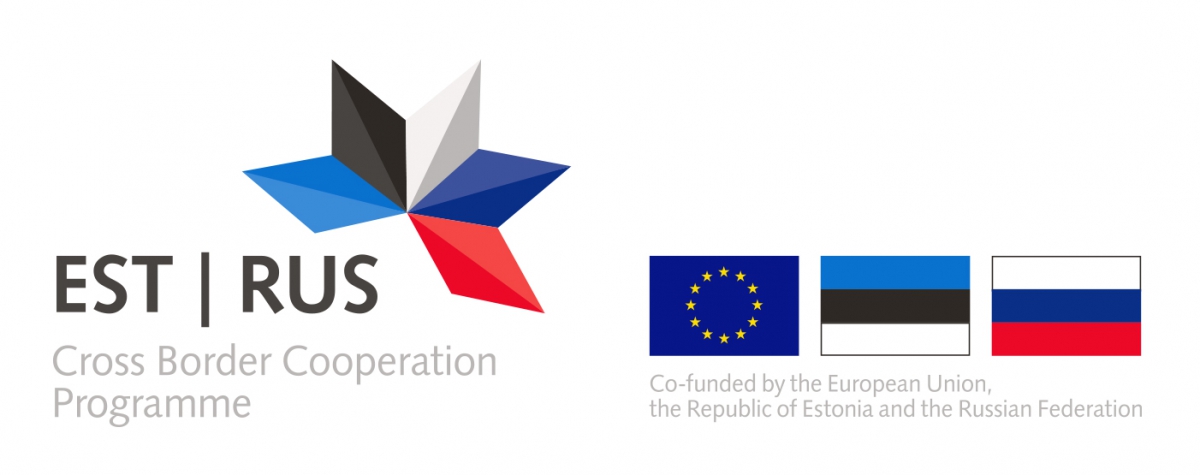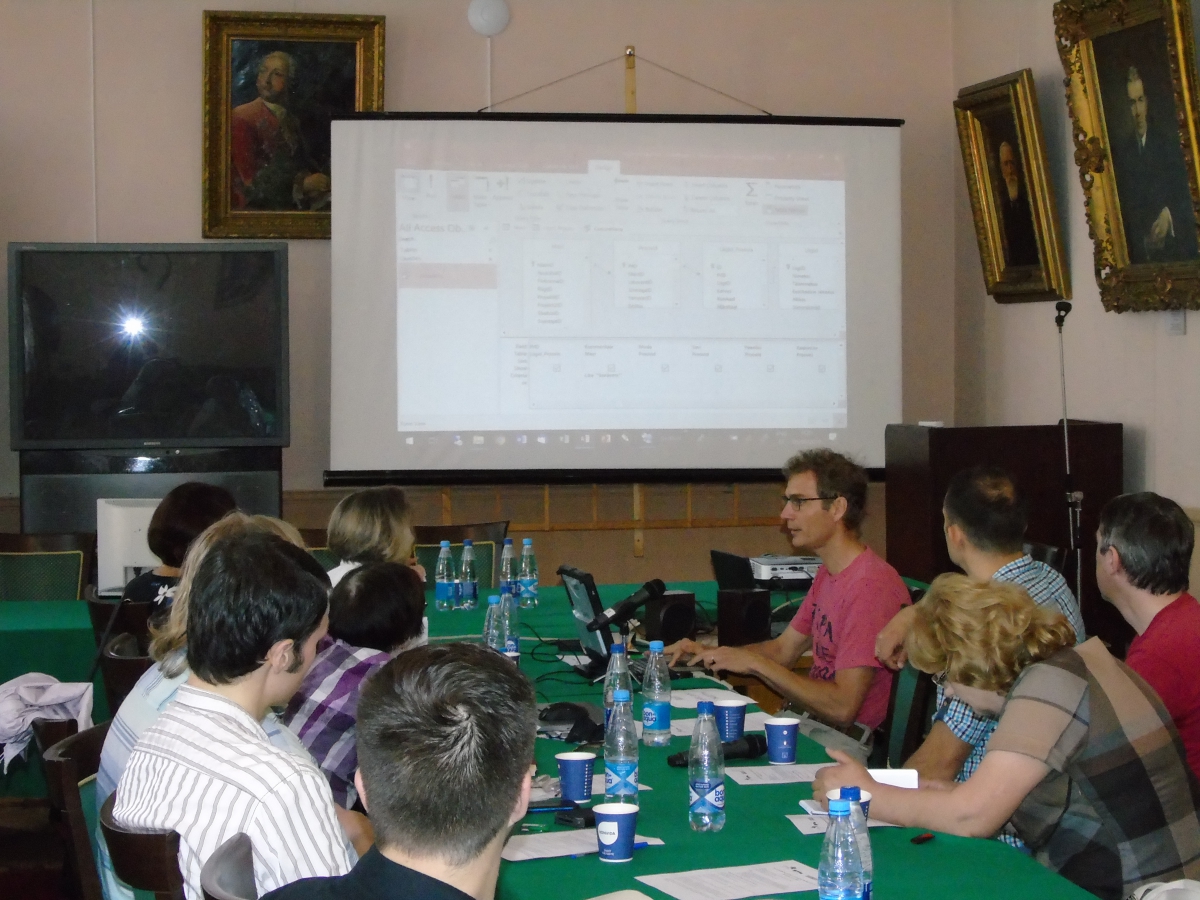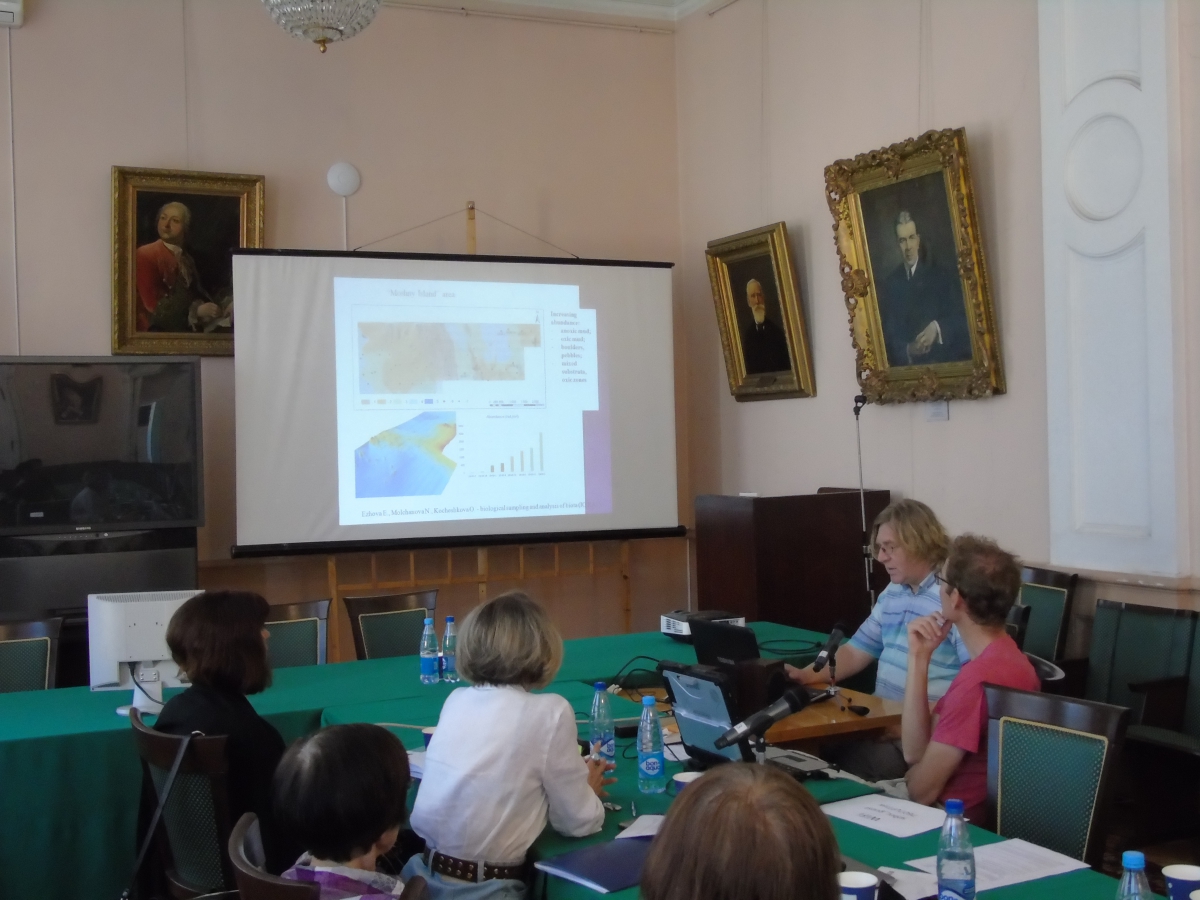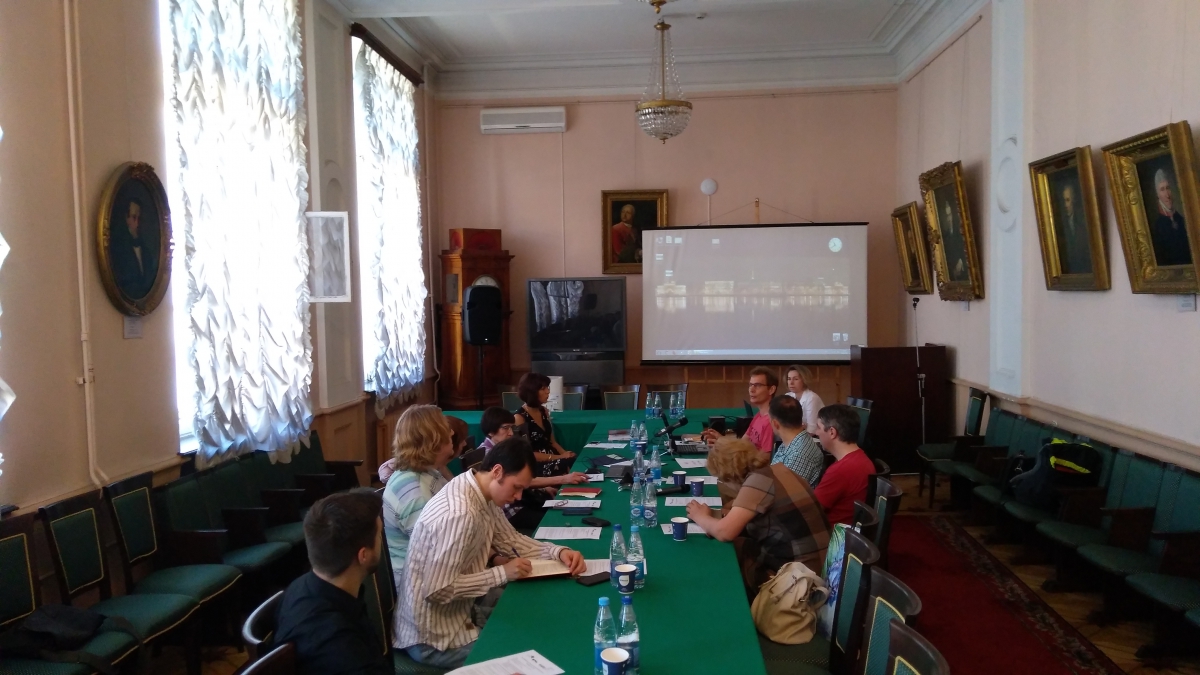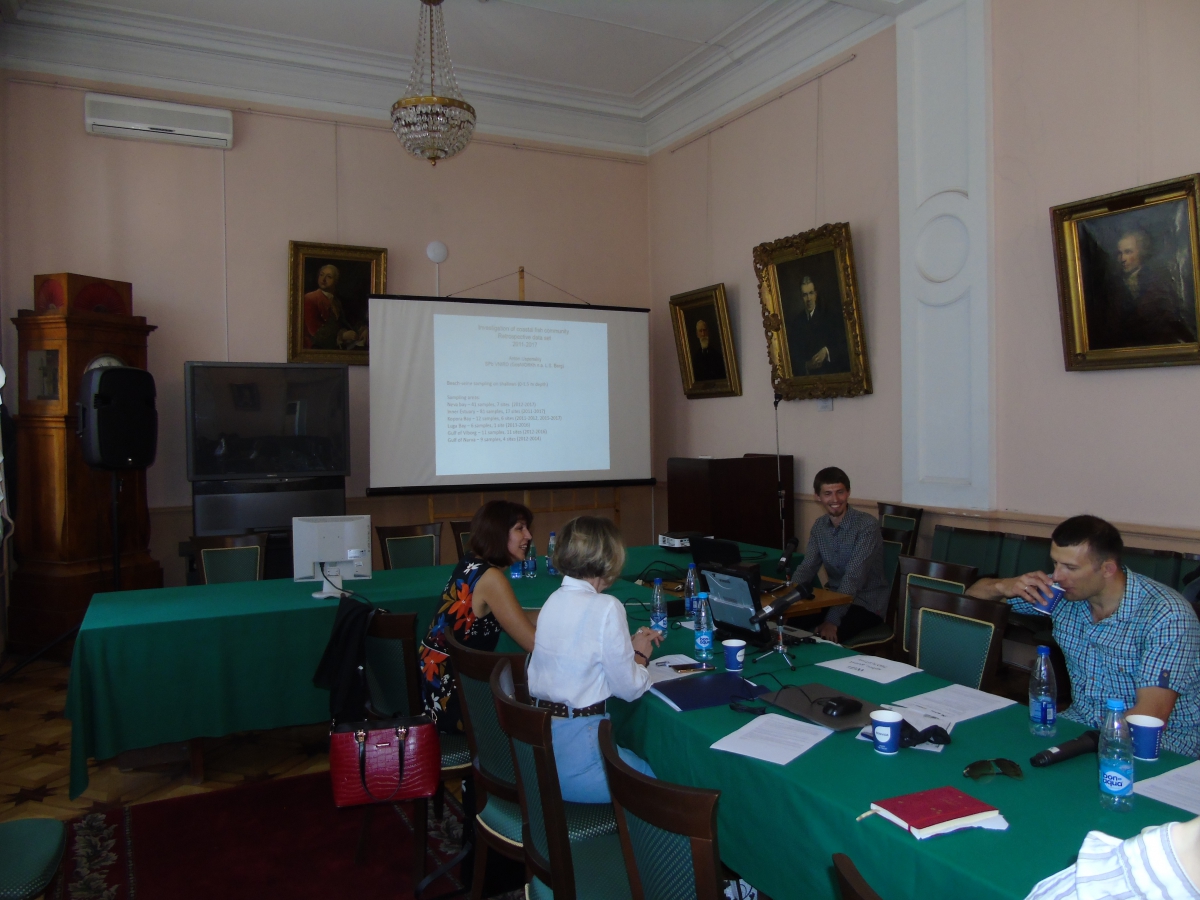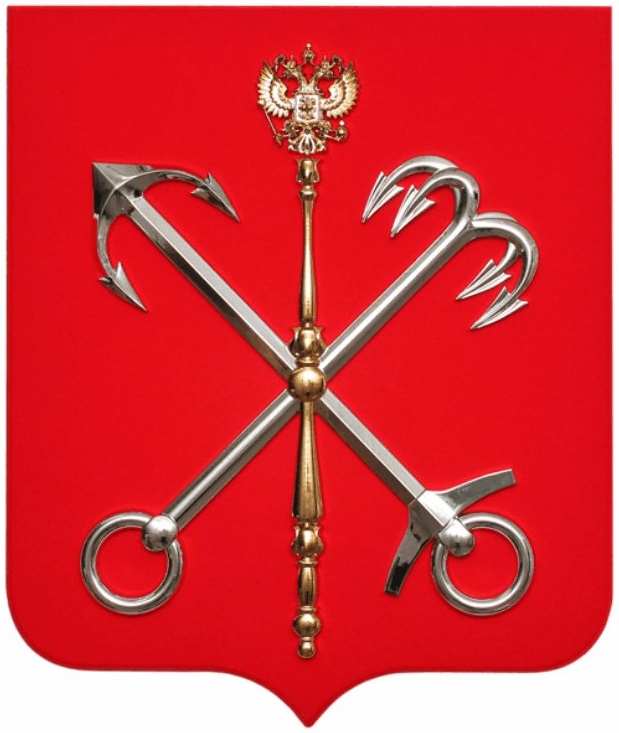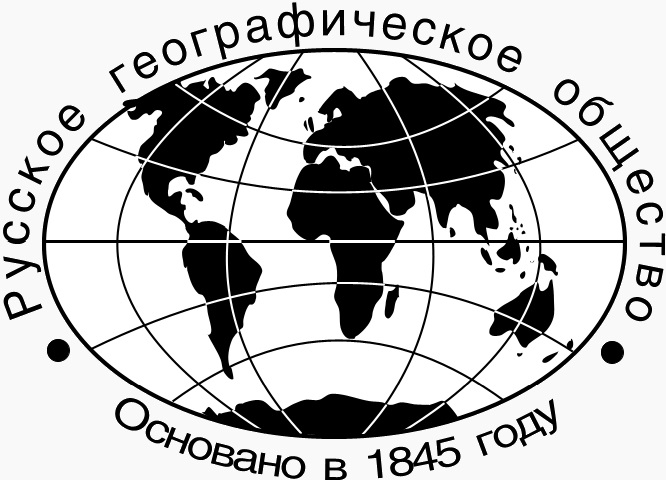ER55
Project stuff
Field 2020
Summing up
“Estonia – Russia Cross Border Cooperation Programme 2014-2020”
“Estonia-Russia Cross Border Cooperation Programme 2014-2020 aims to foster cross-border cooperation across the borders between the Republic of Estonia and the Russian Federation to promote socio-economic development in the regions on both sides of the common borders. The Programme web-site is www.estoniarussia.eu.”
The contents of this webpage are the sole responsibility of the Federal State budget institution of sciences St. Petersburg Scientific Centre of the Russian Academy of Sciences (SPBRC) and can in no way be taken to reflect the views of the European Union.

Start date - 01/04/2019 End date - 31/03/2022
TO 6: Environmental protection, climate change mitigation and adaptation
Project Partners
- Estonian Marine Institute (EMI)/University of Tartu (UTartu) is the leading multidisciplinary marine research institute in Estonia contributing to research in several marine study fields.
With its extensive pool of world-leading experts and state-of-the-art facilities, EMI has a mission to better understand the functioning of the Baltic Sea ecosystem and improve management solutions. EMI’s mission is to enhance ecosystem quality and ensure sustainable maritime: development.
EMI was established on the 3 of March in 1992 from the units of Estonian Fishery Institute, Estonian Academy of Sciences Ecology and Marine Research Institute. In 1996 it was merged with the Ministry of Environment and in 2001 it was incorporated with University of Tartu, Estonia's leading centre of research and training.
https://mereinstituut.ut.ee
Anneliis Peterson [email protected]
Jonne Kotta [email protected] - Federal State budget institution of sciences St. Petersburg Scientific Centre of the Russian Academy of Sciences (SPBRC) performs various ecological monitoring programs, environmental impact assessments and acts as an education center disseminating scientific knowledge to wider public.
Since 2004 and onwards, SPBRC is actively engaged in activities related to nature protection, ecological safety and spatial planning in the Gulf of Finland area. SPBRC has a long record of international co-operation in the Baltic Sea region, including the trilateral Gulf of Finland Year 2014 initiative.
http://www.spbrc.nw.ru/en/about
Marina Orlova [email protected]
- Estonian Ministry of the Environment (EME) / Department of the Marine Environment is responsible for elaboration of legal framework of national environmental and nature protection as well as the use, reproduction and accounting for natural capital.
The mission of EME is to create conditions that ensure the current and future generations can live in an ecologically intact and diverse environment and ensure sustainable use of natural resources. EME is a strategic coordinator for several national environmental protection and management issues ranging from national environmental monitoring, fisheries quotas to marine strategy etc. In order to make well-informed policy and management decisions, it is of EME’s key interest to collaborate, share knowledge as well as obtain high quality data on marine environment and associated human impacts.
https://www.envir.ee/en
Agnes Unnuk [email protected]
Associated partners
- Committee for Nature Use, Environmental Protection and Ecological Safety of the City of St. Petersburg (CNUEPES) is responsible for the implementation of the city’s policy in the field of environmental protection and ecological safety.
CNUEPES adds a representation of a St. Petersburg governmental committee to the project consortium and thereby assures that the results of the ADRIENNE project would be communicated among important stakeholders and implemented in environmental protection and monitoring of the aquatic territories of St. Petersburg. The associated partner also provides advice when implementing deliverables of the project.
http://www.infoeco.ru/index.php?id=149
Ivan Serebritskiy [email protected]
- Russian Geographical Society (RGS), All-Russian non-governmental organization that promotes exploration and geography with research programs in fields including oceanography and ethnography.
The participation of RGS enables linking scientific institutions, educational societies and common people in the Leningrad region. The organization provides advice and consultation in order to improve the outputs of the project.
https://www.rgo.ru/en
Anton Yushko [email protected]
- Finnish Environment Institute (SYKE) - a research institute and government agency under the Ministry of the Environment is both a research institute, and a centre for environmental expertise.
SYKE's research focuses on changes in the environment and seeks ways to manage these changes. SYKE has been previously involved in trilateral cooperation in the Gulf of Finland in questions related to underwater biodiversity, human impacts on the marine environment and maritime spatial planning. Participation of SYKE’s experts in ADRIENNE enable to communicate the project’s results to wider audience and increase the visibility of the project in the whole Gulf of Finland area.
https://www.syke.fi/en
Kirsi Kostamo [email protected] -
Kotka Maritime Research Centre (KMRC) aims to improve the interaction between the science and the society by focusing on conveying theory into practice.
KMRC combines the expertise of four leading Finnish universities in the fields of maritime transport and logistics, maritime safety and the environmental effects of maritime activities. The juridical body operates in close collaboration with the maritime industry, universities, research organizations, institutes, and authorities both nationally and internationally. The practical solutions based on scientific research can improve the profitability of maritime industries, decrease the environmental impacts of maritime transportation, and outline cost-efficient solutions to challenges the maritime sector is facing.
http://www.ubcwheel.eu/index.php/gpdp:gpdb/article/839
Anna Kiiski [email protected]
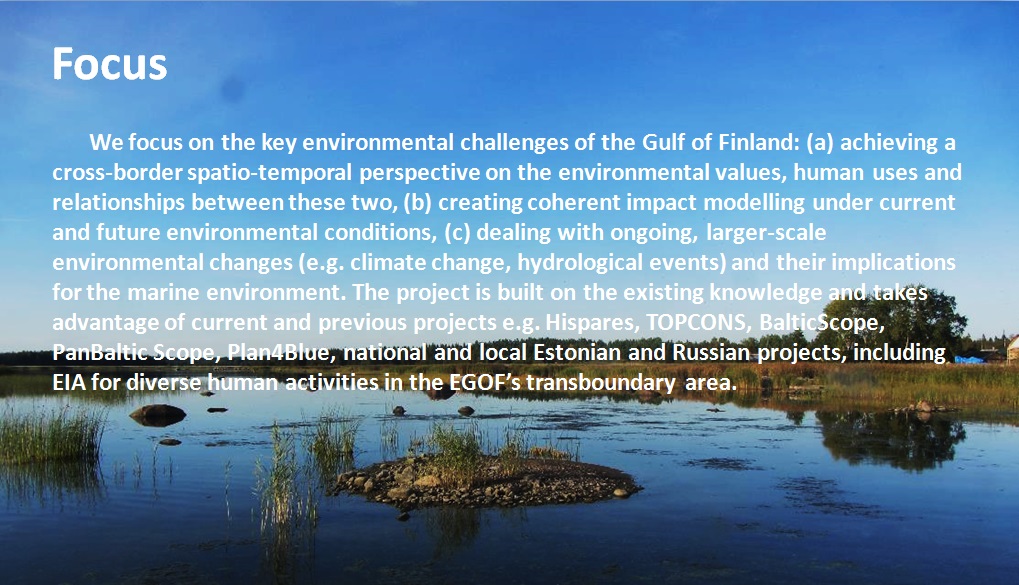


Work packages
General:
-
WP M (Management)
-
WP C Communication and visibility
Core activities:
- WP T 1 Harmonizing approaches in mapping, modelling and valuing the biota (01.04.2019 – 30.09.2021)
- WP T 2 Mapping the biota and quantification of synergistic impacts of climate change and human uses on joint nature assets including fishery and energy sectors (10.2019-30.03.2022)
- WP T 3 Generating transboundary GIS environmental risk assessment and mitigation tool (04.2020-03.2022)
Its progress:
- Processing of data obtained during the field season of 2019.
- Preparation for field work in 2020.
- Preparation for a meeting of project participants scheduled for March 2020.
Project achievements and results:
- Successfully completed the field season of 2019.
- https://www.envir.ee/et/uudised/soome-lahest-leiti-mehhiko-paritolu-karp
- http://ecopeterburg.ru/wp-content/uploads/2019/12/OS-14-%D0%BF%D0%BE%D1%... (p.114).
5th June 2019, SPBRC RAS, University emb., 5 Small conference Hall, Bilateral ER 55 meeting.
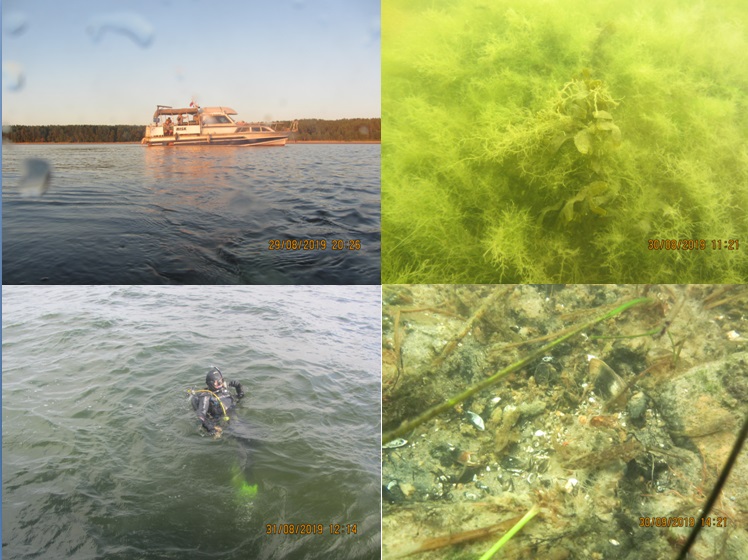
Field work since May 2019 till …. New data collection according to harmonized approaches.
More information:
- The Programme website: https://www.estoniarussia.eu
- DG NEAR – till 31 Dec 2019: https://ec.europa.eu/neighbourhood-enlargement/neighbourhood/cross-borde...\
- DG REGIO – from 1 Jan 2020: https://ec.europa.eu/regional_policy/en
- The Ministry of Economic Development of the Russian Federation: http://economy.gov.ru/minec/activity/sections/mps/programs/
- The Ministry of Finance of Estonia https://www.rahandusministeerium.ee/en/interreg
- Link to the project's Lead partner's website (if any) https://adrienne.ut.ee/projektist-1?lang=et
- Link to the project's social media https://twitter.com/AdrienneEr55
- 2159 reads

